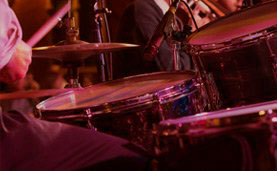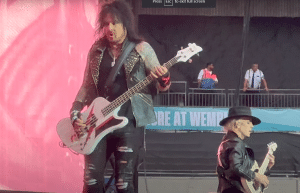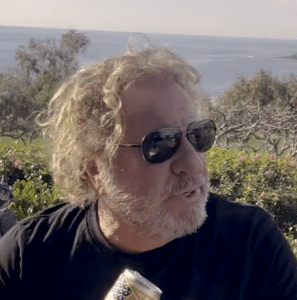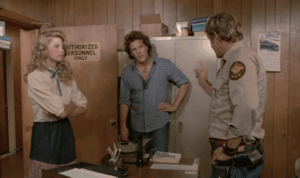The Music Legends Who Never Had A Number 1 Hit
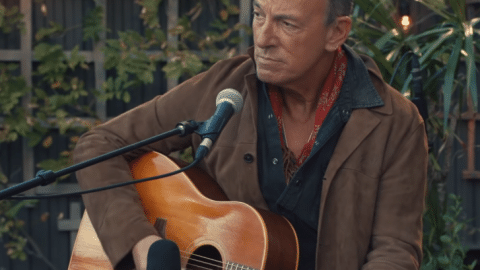
via @bleachers / YouTube
Chart success may dominate headlines, but it doesn’t always tell the full story. Some of the most celebrated names in music have built lasting legacies without ever claiming the top spot on the Billboard Hot 100. Their influence echoes through decades, shaping genres, breaking boundaries, and inspiring generations—yet the No. 1 hit remained elusive.
These artists weren’t defined by a fleeting chart-topping moment; they were defined by entire movements. They packed arenas, rewrote the rules of their craft, and sold millions of albums around the world. Critics praised their innovation, fans worshipped their authenticity, and fellow musicians cited them as trailblazers.
This list isn’t about what they lacked—it’s about everything they gave. From rock icons to genre-bending pioneers, these 40 music legends prove that a No. 1 single is just one kind of success. Sometimes, the loudest impact doesn’t come with a gold-plated number one.
1. AC/DC
With their hard-hitting riffs and larger-than-life stage presence, AC/DC became one of the most recognizable names in rock history. From “Back in Black” to “Highway to Hell,” their songs became anthems for generations of fans and staples of arena rock playlists.
Yet, despite their enormous success and global acclaim, AC/DC never scored a No. 1 hit in the U.S. Their closest attempt came with “Moneytalks,” which peaked at No. 23 on the Billboard Hot 100 in 1990. While radio hits were never their focus, the band’s legacy speaks louder than any chart position.
2. Bad Company
Formed in the early ’70s, Bad Company quickly made their mark with gritty vocals and blues-infused rock. Their debut single, “Can’t Get Enough,” became a radio favorite and helped define the sound of the decade.
Although they earned six Top 20 hits, a No. 1 single always remained just out of reach. “Can’t Get Enough” reached an impressive No. 5, but the band never climbed higher. Still, their tracks remain timeless and continue to be celebrated by classic rock fans.
3. Black Sabbath
As pioneers of heavy metal, Black Sabbath introduced a darker, more intense sound to rock music. With Ozzy Osbourne at the helm, their influence on the genre is immeasurable, laying the groundwork for countless metal acts that followed.
However, chart-toppers were not part of their journey. In the U.K., “Paranoid” reached No. 4, but in the U.S., the band never broke into the Top 40 with their signature tracks. “Iron Man,” one of their most recognizable songs, only reached No. 52 on the Billboard Hot 100 in 1971.
4. Bruce Springsteen
Bruce Springsteen is an American icon, known for his poetic storytelling and heartland rock sound. Albums like Born to Run and Born in the U.S.A. solidified his status as a cultural touchstone, with sold-out tours and critical acclaim.
Surprisingly, none of his singles ever claimed the top spot on the Billboard charts. His closest call was “Dancing in the Dark,” which stalled at No. 2 in 1984. Interestingly, he did write a No. 1 hit—Manfred Mann’s Earth Band took his song “Blinded by the Light” to the top in 1977.
5. The Clash
The Clash blended punk, reggae, and political commentary to become one of the most influential bands of their time. With albums like London Calling, they pushed boundaries and inspired generations of musicians.
Despite their groundbreaking impact, The Clash never reached No. 1 on the Billboard Hot 100. Their most successful single, “Rock the Casbah,” peaked at No. 8. While chart-topping pop hits weren’t their aim, their cultural legacy runs far deeper than any ranking could convey.
6. Creedence Clearwater Revival
Creedence Clearwater Revival dominated the late ’60s and early ’70s with a string of timeless hits that captured the spirit of Americana and Southern rock. Songs like “Proud Mary,” “Bad Moon Rising,” and “Fortunate Son” became generational anthems and remain staples of classic rock playlists.
Yet, despite their immense popularity and steady radio presence, CCR never secured a No. 1 hit on the Billboard Hot 100. Incredibly, five of their singles peaked at No. 2, making them perhaps the most famous band never to top the charts. Their consistent near-wins only highlight how much their music outlasted fleeting chart success.
7. Bob Dylan
Bob Dylan is arguably one of the most influential songwriters in modern music, a Nobel laureate whose lyrics reshaped the landscape of folk and rock. With a career spanning decades, Dylan’s impact far outweighs any single chart position.
Still, it’s surprising to many that he never had a No. 1 hit on the Billboard Hot 100 as a performer. “Like a Rolling Stone” and “Rainy Day Women #12 & 35” both reached No. 2 in the 1960s, but never crossed that final threshold. His music, however, has been covered, studied, and celebrated more than most chart-toppers ever will be.
8. Crosby, Stills, and Nash
Crosby, Stills, and Nash, later joined by Neil Young, created some of the most harmonically rich and socially conscious music of the 20th century. Their blend of folk, rock, and vocal harmony helped define the Woodstock generation.
Despite their prominence and musical prowess, CSN’s highest-charting song was “Just a Song Before I Go,” which reached No. 7 in 1977. With or without Young, the group never cracked the Top 5—a surprising fact considering their cultural relevance and steady album sales.
9. Deep Purple
Deep Purple is synonymous with hard rock and heavy metal, thanks to explosive tracks like “Smoke on the Water,” one of the most iconic guitar riffs in rock history. Their pioneering sound influenced generations of rock musicians and shaped the genre’s future.
However, when it came to the Billboard Hot 100, the band never rose higher than No. 4. “Smoke on the Water” and “Hush” reached that mark, but a No. 1 eluded them. Still, Deep Purple’s impact on rock music goes far beyond what the charts could ever capture.
10. Electric Light Orchestra (ELO)
Electric Light Orchestra merged classical strings with rock guitars, creating a lush, orchestral sound that stood out in the 1970s. With Jeff Lynne at the helm, the band crafted ambitious, melodic songs that resonated with fans worldwide.
Their highest-charting hit in the U.S. came in 1979 with “Don’t Bring Me Down,” peaking at No. 4. Though they never had a No. 1, ELO’s influence on progressive pop and rock remains significant, and their songs continue to find new listeners decades later.
11. Grateful Dead
The Grateful Dead built a devoted following through their live performances, improvisational jams, and countercultural spirit. Their music became a lifestyle for legions of fans known as Deadheads, who followed them from city to city, year after year.
Despite their cult status, the band had very limited success on the singles chart. Before “Touch of Grey” surprisingly climbed to No. 9 in 1987, their best-performing track was “Truckin’,” which peaked at a modest No. 64 back in 1970. Their legacy thrives more in the realm of live music than radio hits.
12. Green Day
Green Day brought punk rock to the mainstream with albums like Dookie and American Idiot, reshaping the modern rock landscape. Their sound, energy, and rebellious lyrics earned them millions of fans around the world.
Yet even with massive popularity, they’ve never scored a No. 1 single on the Billboard Hot 100. Their closest brush with the top came in 2004 when “Boulevard of Broken Dreams” peaked at No. 2. While they’ve won Grammy Awards and earned critical acclaim, the top chart spot remained elusive.
13. Don Henley
Don Henley’s solo career after the Eagles proved he could stand tall on his own, with a voice perfectly suited for introspective and powerful rock ballads. Songs like “The Boys of Summer” and “Dirty Laundry” solidified his position as a solo force in the ’80s and ’90s.
In 1992, he came closest to a No. 1 with the duet “Sometimes Love Just Ain’t Enough,” alongside Patty Smyth, which peaked at No. 2. Although Henley has earned both commercial success and critical respect, the No. 1 spot narrowly escaped him.
14. Jefferson Airplane / Jefferson Starship
Jefferson Airplane helped define the psychedelic sound of the ’60s, with classics like “White Rabbit” and “Somebody to Love” becoming anthems of the era. As the band evolved into Jefferson Starship, they shifted to a more radio-friendly rock sound.
Across both incarnations, they scored some memorable hits but never reached No. 1. “Somebody to Love” reached No. 5 in 1967, while Jefferson Starship’s “Miracles” peaked at No. 3 in 1975. Though the names changed, their impact on rock remained steady—chart-topper or not.
15. Jimi Hendrix
Jimi Hendrix redefined what the electric guitar could do, blending rock, blues, and psychedelia into a style uniquely his own. His performances, particularly at Woodstock and Monterey Pop Festival, are considered some of the most iconic in music history.
Yet, for all his innovation and legendary status, Hendrix never cracked the Top 10 on the Billboard Hot 100. His highest-charting U.S. single was “All Along the Watchtower,” which reached No. 20 in 1968. His influence, however, is immeasurable—and far more enduring than any chart ranking.
16. Journey
Journey is one of the most beloved rock bands in American history, known for anthemic songs and Steve Perry’s soaring vocals. Their music has become a staple at sporting events, weddings, and karaoke nights across generations.
Surprisingly, their biggest hit, “Don’t Stop Believin’,” never reached No. 1. It peaked at No. 2 on the Billboard Hot 100, even though it’s arguably one of the most recognizable songs of all time. Its enduring popularity proves that chart peaks don’t always reflect long-term cultural impact.
17. Judas Priest
Judas Priest helped shape the sound and look of heavy metal, with twin guitars, leather-studded outfits, and Rob Halford’s piercing vocals. Albums like British Steel and Screaming for Vengeance remain landmarks in metal history.
Despite their influence, Judas Priest never saw real success on the singles charts. Their only entry on the Billboard Hot 100 was “You’ve Got Another Thing Comin’,” which reached No. 67 in 1982. They may have been ignored by mainstream radio, but their legacy in rock is unquestionable.
18. Kansas
Kansas blended progressive rock with heartland themes, producing hits that were both musically ambitious and emotionally resonant. Songs like “Carry On Wayward Son” continue to enjoy a long afterlife on rock radio and pop culture.
Their highest-charting single came in 1978 with “Dust in the Wind,” which climbed to No. 6. While they never reached the top of the charts, Kansas’s thoughtful lyrics and instrumental prowess helped them carve out a lasting place in rock history.
19. The Kinks
The Kinks helped define the British Invasion with raw, punchy guitar riffs and clever lyrics. Their track “You Really Got Me” is considered a precursor to hard rock and punk, influencing countless musicians across genres.
However, chart-wise, their most successful singles were “Tired of Waiting for You” in 1965 and “Come Dancing” in 1983, both of which peaked at No. 6. Even without a No. 1, The Kinks’ catalog remains one of the most celebrated in British rock.
20. Kiss
With their over-the-top stage shows, painted faces, and stadium-shaking energy, Kiss became more than a band—they became a brand. Their influence spanned music, merchandise, and pop culture at large.
Though they released nine Top 10 albums, their singles didn’t reach the same heights. Their best-performing track, “Beth,” peaked at No. 7 in 1976. Still, few bands have built a fanbase as dedicated as the KISS Army, and their legacy is louder than the charts suggest.
21. Led Zeppelin
Led Zeppelin is often hailed as one of the greatest rock bands of all time, with a sound that blended blues, hard rock, and mysticism. Their albums—like Led Zeppelin IV—have gone multi-platinum and are essential to any rock collection.
Despite their massive influence and enduring popularity, they never reached No. 1 on the Billboard Hot 100. Their highest-charting single, “Whole Lotta Love,” peaked at No. 4 in 1969. Zeppelin focused more on albums and live performances, which may explain their underwhelming singles chart presence.
22. Lynyrd Skynyrd
Lynyrd Skynyrd captured Southern rock in its purest form, delivering powerful live shows and iconic tracks that still define the genre. Songs like “Free Bird” and “Sweet Home Alabama” became rock staples and cultural touchstones.
Surprisingly, neither of these fan favorites topped the charts. “Sweet Home Alabama” made it to No. 8, while “Free Bird” barely cracked the Top 20. Despite the lack of No. 1 singles, Lynyrd Skynyrd’s legacy lives on through endless radio play and their unmistakable Southern swagger.
23. Metallica
Metallica revolutionized metal with their aggressive sound, dark themes, and complex compositions. Albums like Master of Puppets and The Black Album helped them break into the mainstream without compromising their roots.
Even with global fame, they never hit No. 1 on the singles chart. “Enter Sandman” peaked at No. 16, while “Until It Sleeps” reached No. 10 in 1996—their only Top 10 hit. Metallica’s true strength has always been in full albums and sold-out arenas rather than radio-friendly singles.
24. The Moody Blues
The Moody Blues carved out a niche blending rock with symphonic and psychedelic influences. Their introspective lyrics and lush arrangements made albums like Days of Future Passed landmarks in progressive rock.
Although they scored a No. 1 hit in the U.K. with “Go Now,” their biggest success in the U.S. came with “Nights in White Satin,” which reached No. 2 in 1972. Their chart performance may have been modest, but their influence on prog rock and concept albums is undeniable.
25. Nirvana
Nirvana exploded onto the scene in the early ’90s, spearheading the grunge movement and giving voice to a generation with raw, emotive music. Kurt Cobain’s songwriting, paired with the band’s energy, turned them into cultural icons almost overnight.
Their most well-known single, “Smells Like Teen Spirit,” peaked at No. 6 on the Billboard Hot 100 in 1991. While they didn’t have a No. 1 hit, Nirvana changed the music landscape forever, proving that influence isn’t always measured in chart-topping numbers.
26. Ozzy Osbourne
Known as the “Prince of Darkness,” Ozzy Osbourne rose to fame with Black Sabbath before launching a successful solo career. His persona, wild antics, and unmistakable voice made him one of rock’s most recognizable figures.
Even with a devoted fanbase and decades in the industry, Ozzy never scored a No. 1 hit on the Billboard Hot 100. His highest-charting solo single was the heartfelt ballad “Mama, I’m Coming Home,” which peaked at No. 28 in 1992. Despite the numbers, Ozzy’s legacy looms large in rock and metal history.
27. Pearl Jam
Pearl Jam emerged in the early ’90s as one of grunge’s torchbearers, helping shape the sound of a generation with introspective lyrics and explosive live performances. Songs like “Alive,” “Jeremy,” and “Even Flow” became era-defining tracks.
But when it comes to the Billboard Hot 100, Pearl Jam surprisingly stayed mostly under the radar. Most of their songs didn’t chart at all, with “Last Kiss” being their biggest hit—peaking at No. 2 in 1999. It remains one of rock’s biggest chart paradoxes, given their immense popularity.
28. Pat Benatar
With powerhouse vocals and a string of anthemic hits in the ’80s, Pat Benatar became a symbol of strength and defiance in rock music. Songs like “Heartbreaker” and “Hit Me with Your Best Shot” remain iconic to this day.
Despite several songs climbing the charts, she never managed to reach the No. 1 spot. Both “Love Is a Battlefield” and “We Belong” peaked at No. 5. Still, her contributions to rock—and the inspiration she gave to women in music—are worth more than any chart position.
29. Ramones
The Ramones laid the groundwork for punk rock with their no-frills, high-energy songs and DIY attitude. Tracks like “Blitzkrieg Bop” and “I Wanna Be Sedated” became cult classics and deeply influenced the punk scene that followed.
However, commercial success never matched their legendary status. The Ramones’ highest-charting single, “Rockaway Beach,” only made it to No. 66 on the Billboard Hot 100. In the end, they didn’t need mainstream approval—they rewrote the rules of rock from the underground up.
30. Red Hot Chili Peppers
Fusing funk, rock, and alternative sounds, Red Hot Chili Peppers have enjoyed a long and dynamic career. Their hits like “Californication,” “Scar Tissue,” and “Under the Bridge” defined alternative radio in the ’90s and 2000s.
They came close to chart-topping glory three times, with “Under the Bridge,” “Dani California,” and “Scar Tissue” all peaking at No. 2. Yet, a No. 1 single never materialized. Still, their constant reinvention and infectious energy have secured their place among rock’s most enduring acts.
31. R.E.M.
R.E.M. brought alternative rock into the mainstream with poetic lyrics, jangly guitars, and a distinct college-radio appeal. As pioneers of the indie movement, they helped shape the sound of modern rock through the ’80s and ’90s.
Between 1987 and 1991, they had four Top 10 hits, with “Losing My Religion” becoming their biggest success, reaching No. 4 in 1991. Despite critical acclaim and massive influence, R.E.M. never landed a No. 1 hit—but their impact on alternative rock remains undeniable.
32. Rush
Rush earned a loyal following with their blend of progressive rock, intricate musicianship, and thought-provoking lyrics. With Neil Peart’s drumming, Geddy Lee’s vocals, and Alex Lifeson’s guitar work, they became legends of the prog-rock world.
Still, commercial chart success wasn’t their forte. Their highest-charting single in the U.S. was “New World Man,” which peaked at No. 21 in 1982. Though they never climbed into the Top 20, Rush’s technical mastery and cult following secured their place in rock history.
33. Steely Dan
Steely Dan fused jazz, rock, and sardonic storytelling to create a style that was both sophisticated and subversive. Their polished studio work and cryptic lyrics attracted a devoted fanbase and earned critical praise.
They came close to the top with five singles hitting the Top 11, but their highest-charting song, “Rikki Don’t Lose That Number,” peaked at No. 4 in 1974. Their legacy isn’t built on hit singles—it’s built on smart songwriting and genre-defying musicianship.
34. Sting
After dominating the charts with The Police, Sting launched a successful solo career blending rock, jazz, and world music influences. His solo work showcased both musical range and lyrical depth, earning him accolades and a loyal audience.
His top solo hit, “If You Love Somebody Set Them Free,” peaked at No. 3 in 1985. Though he never reached No. 1 on his own, Sting’s artistry and crossover appeal have kept him a relevant and respected figure across decades.
35. Supertramp
Supertramp’s mix of pop, prog, and philosophical lyrics made them one of the more unique acts of the late ’70s and early ’80s. With albums like Breakfast in America, they balanced catchy melodies with conceptual depth.
They placed six songs in the Billboard Top 15, yet their biggest hit, “The Logical Song,” only made it to No. 6 in 1979. Even without a chart-topper, their music continues to resonate with fans who appreciate their intelligent approach to pop-rock.
36. Talking Heads
Talking Heads brought an art-rock sensibility to new wave, blending funk, punk, and experimental sounds with David Byrne’s eccentric lyrics. Their performances were as innovative as their music, pushing boundaries in both sound and visual presentation.
Their biggest commercial hit came with “Burning Down the House,” which peaked at No. 9 on the Billboard Hot 100. While they never cracked the Top 5, their influence on alternative and indie rock remains far-reaching and continues to inspire generations of musicians.
37. Tom Petty
Tom Petty’s songwriting captured the spirit of American rock with a blend of grit, heart, and simplicity. Whether solo, with the Heartbreakers, or as part of the Traveling Wilburys, he consistently delivered memorable tracks that connected deeply with listeners.
On the Billboard Hot 100, his highest-charting song was “Free Fallin’,” which peaked at No. 7 in 1989. Though many of his songs topped the rock charts, Petty never reached No. 1 on the main singles chart—yet his music became part of the fabric of classic American rock.
38. Van Morrison
Van Morrison’s music weaves soul, jazz, and folk into poetic, timeless compositions. “Brown Eyed Girl” is one of the most beloved songs of the 20th century, and albums like Moondance continue to receive critical acclaim.
Surprisingly, despite his iconic catalog, Morrison never broke into the Top 5 on the Billboard Hot 100. “Brown Eyed Girl” topped out at No. 10, while his highest-charting single, “Domino,” reached No. 9. His legacy, however, is built more on lasting emotional resonance than chart positions.
39. The Who
The Who stood at the forefront of British rock with explosive energy, bold concept albums, and anthems like “My Generation” and “Baba O’Riley.” Their live performances and boundary-pushing records helped shape rock music as both an art form and a force.
Despite their massive cultural footprint, The Who never reached the Top 5 on the Billboard Hot 100. Their best performance came in 1967 with “I Can See for Miles,” which peaked at No. 9. The absence of a No. 1 didn’t stop them from becoming legends in the rock pantheon.
40. The Yardbirds
The Yardbirds are often remembered for being the launchpad of three guitar icons: Eric Clapton, Jeff Beck, and Jimmy Page. Their blues-infused rock sound was a vital bridge between British blues and hard rock.
Their most successful U.S. single was “For Your Love,” which reached No. 6 on the Billboard Hot 100. While they never snagged the top spot, their contributions to the evolution of rock guitar left a mark far beyond the charts.


